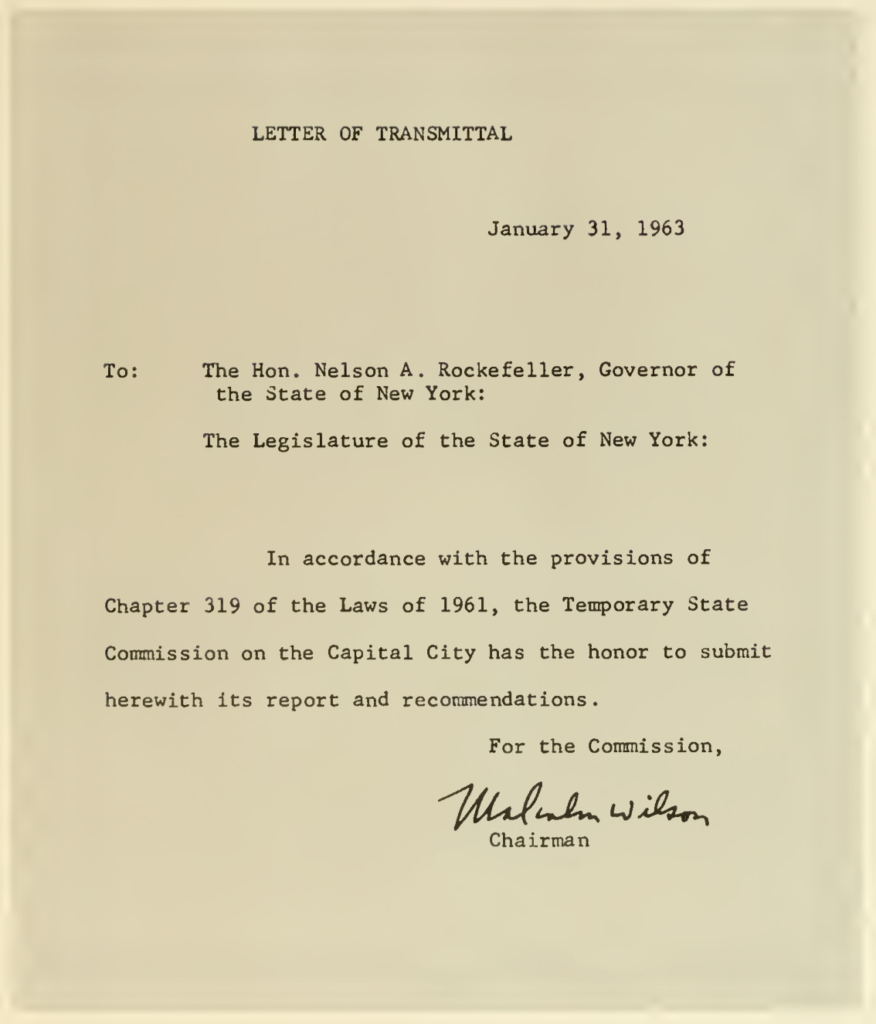
Since last week we had a good look at what went on during the construction of the Empire State Plaza, we thought we’d take a look at some of the planning leading up to that, which fell under the purview of the Temporary State Commission on the Capital City.
The Commission, chaired by Lt. Gov. Malcolm Wilson, was created by Chapter 391 of the Laws of 1961, and made its report in January, 1963. It was charged with a bunch of planning nonsense that provided backing for the overall goal of dislocating the neighborhood south of the Capitol in order to build what was then called the South Mall.
One of its most important tasks was to make specific recommendations toward the rehabilitation of the Capital City,
“including, but not limited to, recommendations as to: a) urban renewal and public and private housing programs; b) improvement of opportunities for employment through attraction of business and commerce; c) arterial highway circulation and other access and transportation facilities; d) construction and maintenance of streets and highways; e) traffic control; f) parking facilities; g) locations for public buildings; h) a civic auditorium; i) modernization of city building codes, and j) the effectiive use of federal and state assistance programs.”
The Commission’s first recommendation, just months into its brief existence, was that the State acquire all the land it needed to build “state facilities in the downtown core,” and that it do so in advance of the completion of the Capital City Plan. No sense waiting for a pesky plan to take shape before bringing in the bulldozers.
Among the special considerations given to the folks who inconveniently lived where the State needed to expand: up to $300 for moving of household effects of the occupants of buildings acquired by the State.
There was also a special act to compensate Albany for loss of property on the tax rolls. Well, sort of. The act provided that owners and tenants of the 92 acres being acquired could continue using their property until the state required physical possession. But they would have to enter into agreements providing for fair rental payments to the State and payments of property taxes to the city. “The intent of this law was to make certain that there would be no drastic disturbance of people or of city tax revenues, pending the orderly relocation of families and the carrying out of specific utilization plans by the State.”
Readers will be happy to know that there was an accelerated riverfront planning effort associated with all this: a special subcommittee came up with recommendations for the redevelopment of both banks of the Hudson. There was also a subcommittee to recommend a convention center or civic auditorium. The interim report of the Commission recommended the creation of a Regional Planning Agency, a Joint City-State Historic Conservation Board for the City of Albany, and the creation of a State Nuclear Research Center. Some of the things that were recommended actually happened. More to come.

Leave a Reply